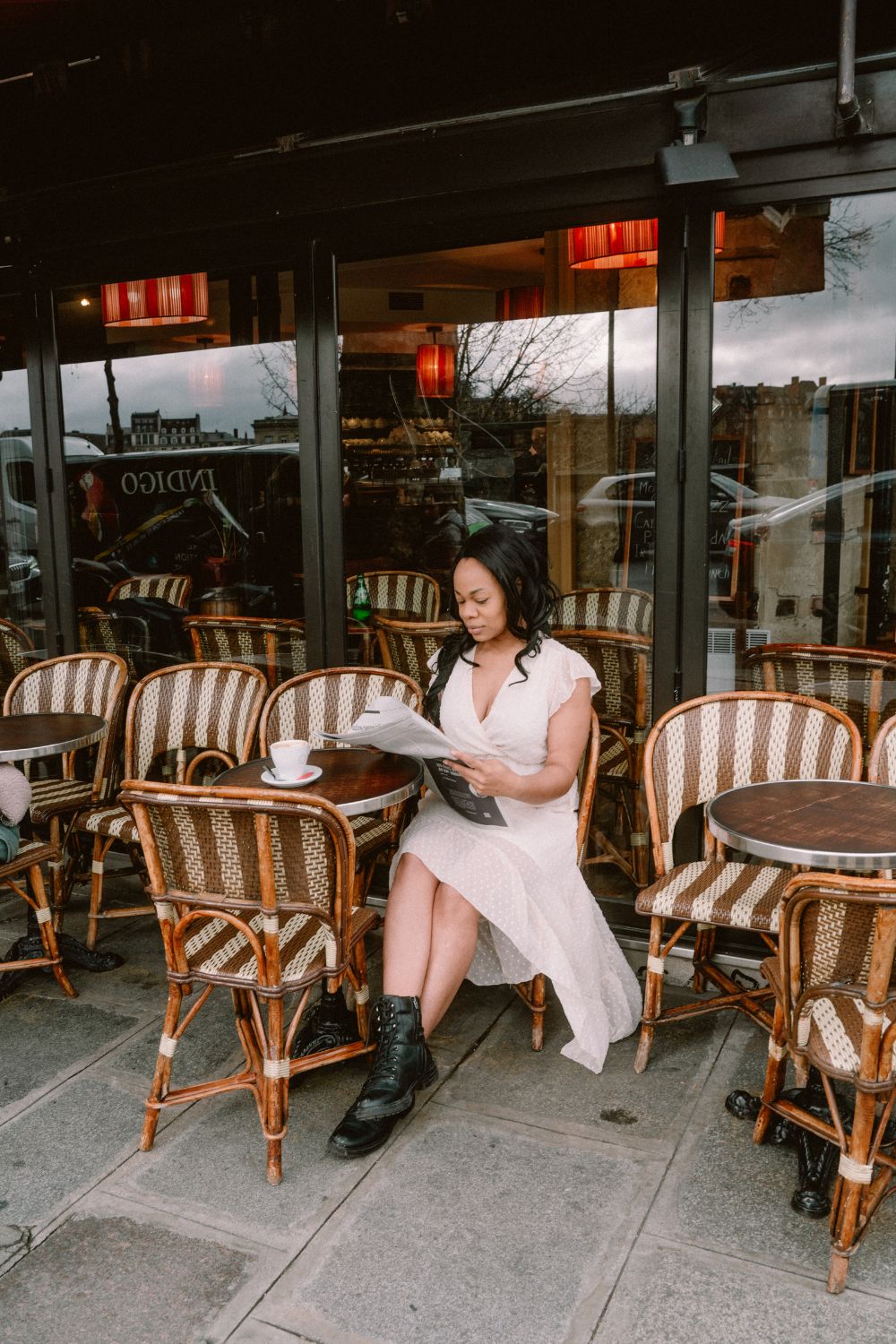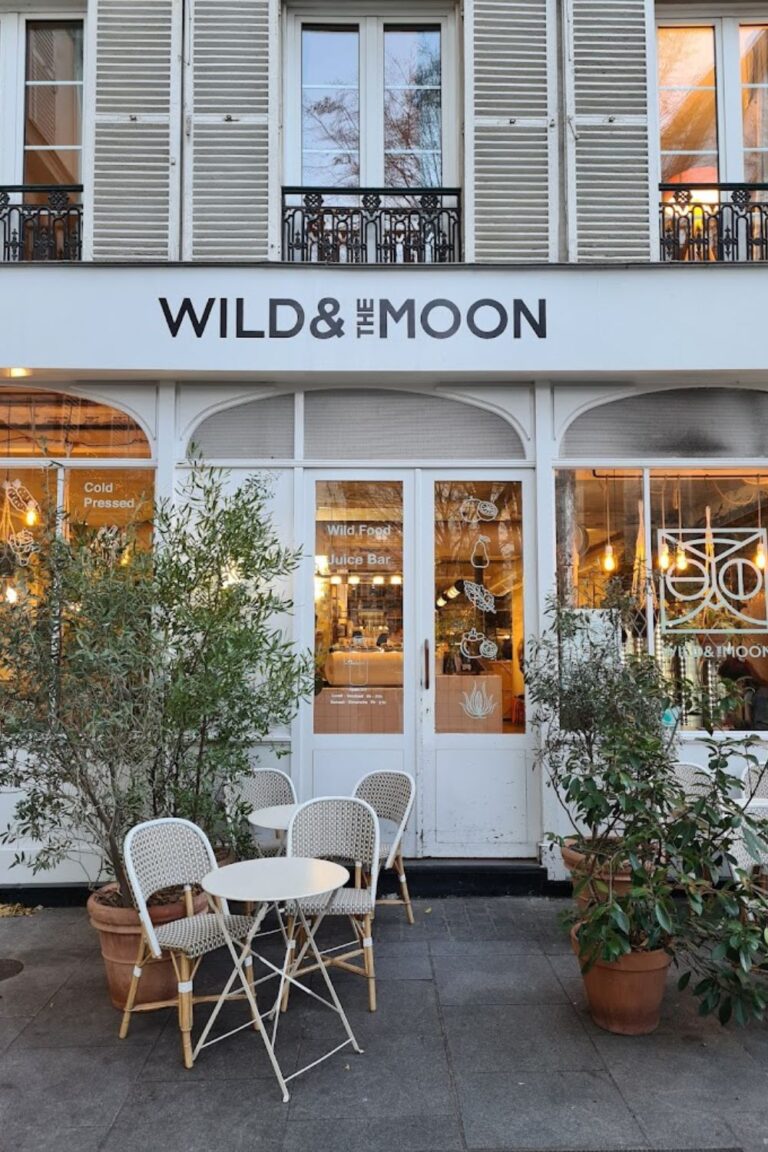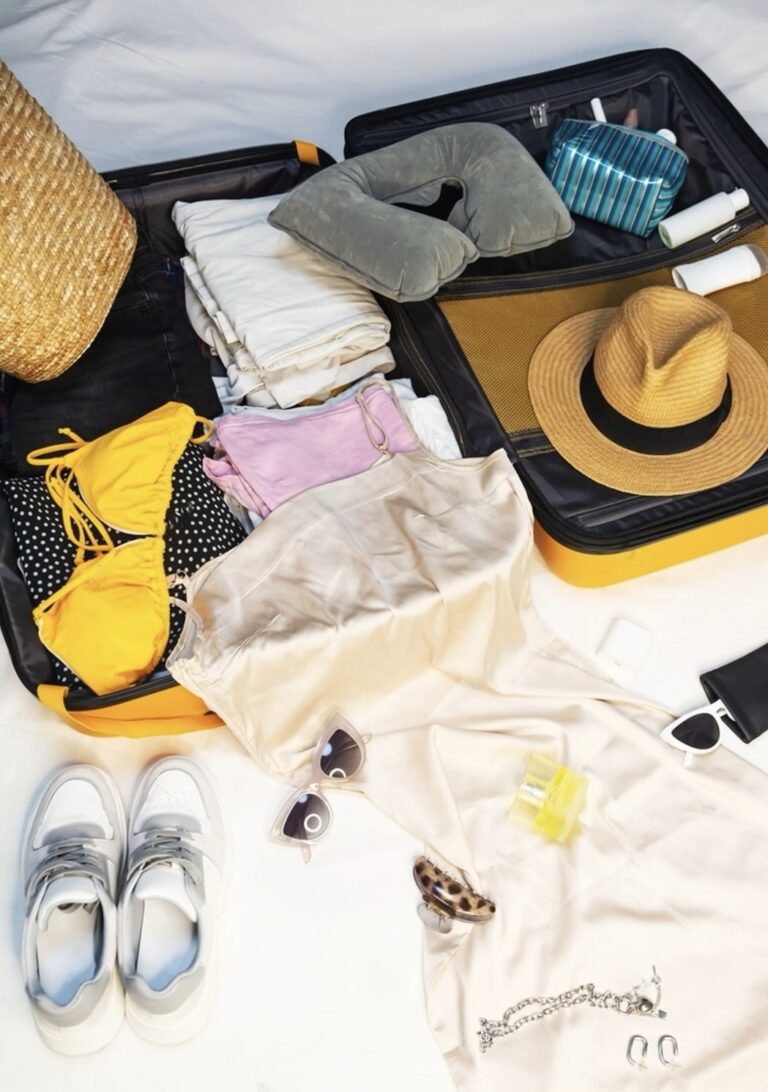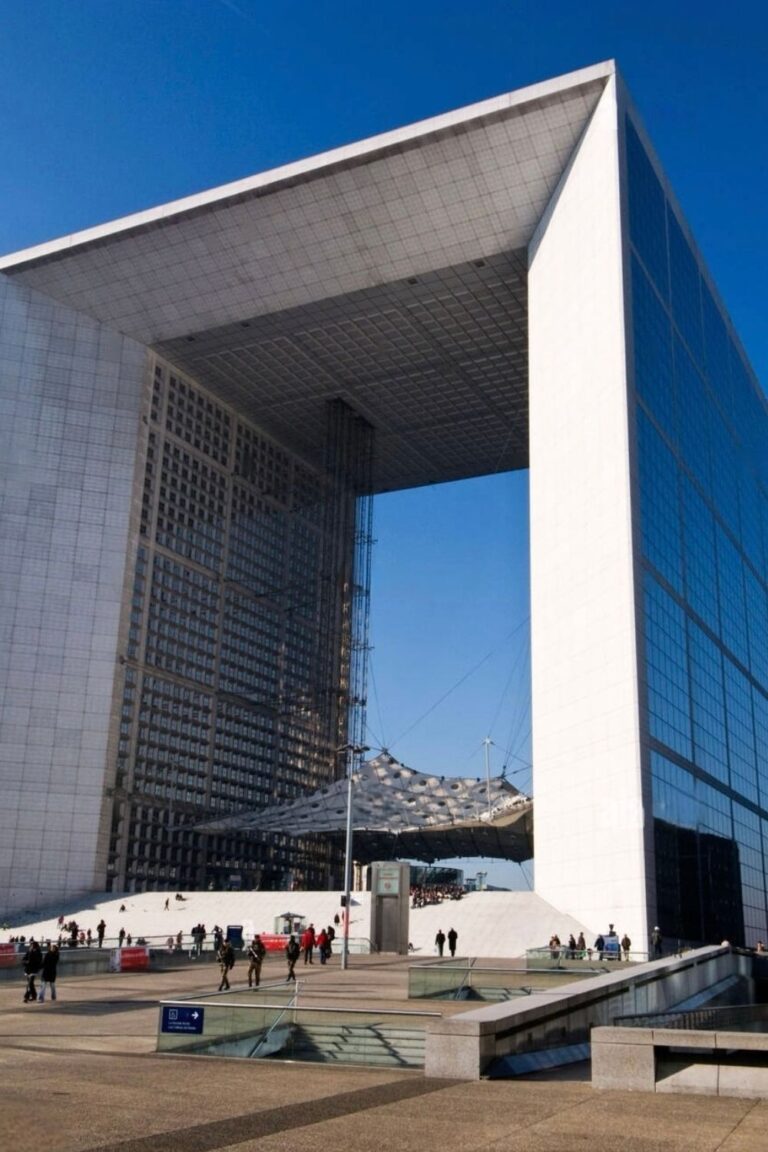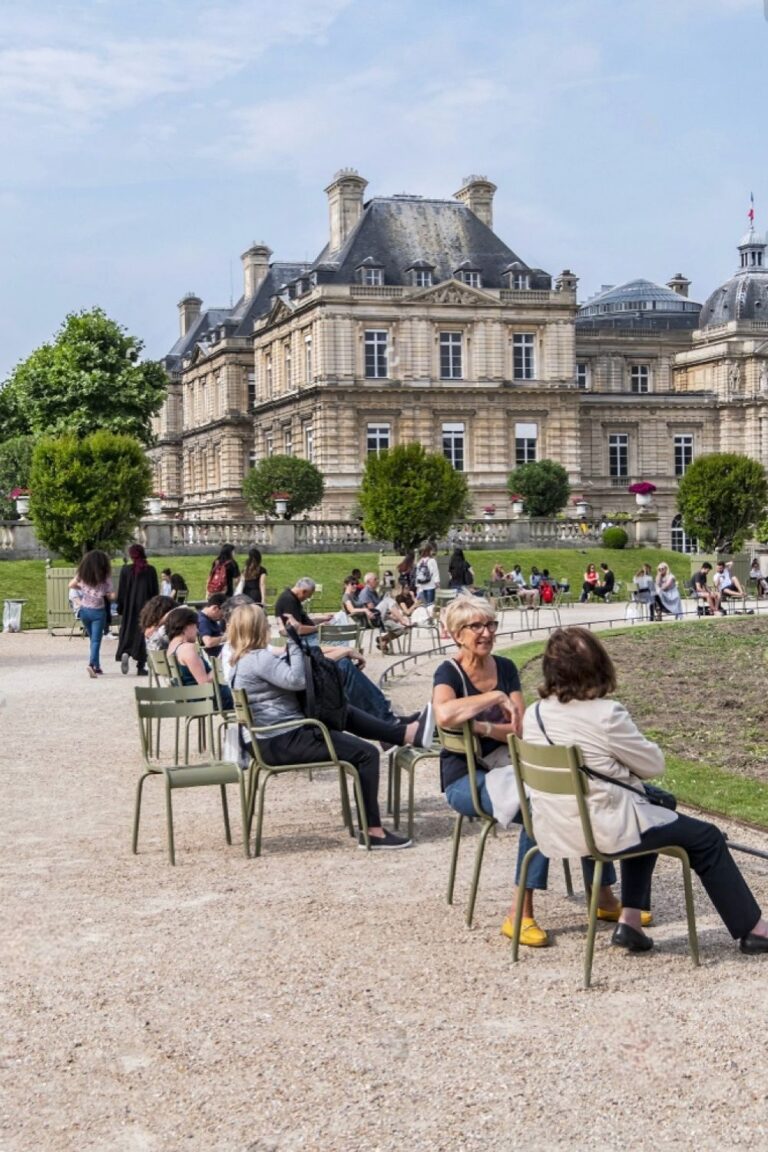How to Use the Metro in Paris (2025 Guide for First-Time Visitors)
Last Updated on April 14, 2025 by April Nicole
Learning how to use the metro in Paris was one of the first things I had to figure out when I moved here in 2021. I’ll be honest, it wasn’t easy at first. I got turned around in big stations like Châtelet, ended up on trains going the wrong way, and spent too long at ticket machines wondering what to buy. If you’re feeling overwhelmed, I’ve definitely been there too.
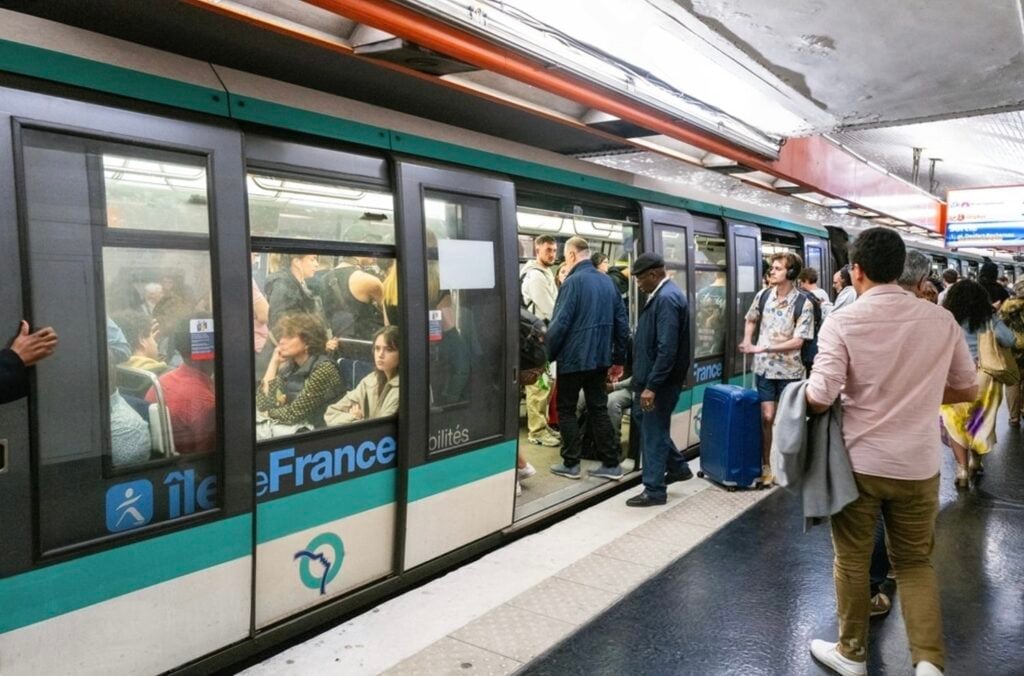
Now, I use the Mmetro every day. Whether I’m heading across town or just grabbing coffee in my neighborhood, it’s my go-to way of getting around. I put this guide together to help first-time visitors feel confident using the metro without the confusion I went through.
This 2025 metro guide for first-time visitors is packed with real-world advice, not generic tips. You’ll find step-by-step advice on buying tickets, choosing the right pass, finding your train, transferring lines, and even handling luggage or accessibility needs. I’ve also included the little things no one tells you, like when to avoid rush hour and how to not get side-eyed for standing on the wrong side of the escalator.
📌 Psst! This blog post contains affiliate links, which means I may earn a small commission if you book through them—at no extra cost to you! Merci! For full details, check out my Disclosure Policy.
🔗 Useful Paris Travel Resources
- ✨ Paris Pass: Access top attractions and skip the line!
- 🚗 GetTransfer.com: Book transfers to/from Paris airports or hotels
- 🧳 Radical Storage: Securely store your luggage while exploring Paris
- 📱 SIM Local: Stay connected in Paris — Use code “DREAMING” for 5% off
- 💻 NordVPN: Watch your favorite shows securely while abroad
- ✈️ French bee: Affordable flights from the U.S. to Paris
- 🎟️ GetYourGuide: Book tours, museum passes, and experiences
- 🏨 Expedia: Find great hotel deals for every budget
paris metro
If you are in a hurry, here’s a summary of how to use the metro in Paris:
Quick Overview
If you’re short on time, here’s a quick cheat sheet with my top Paris metro tips for tourists:
- 16 metro lines, all numbered and color-coded
- Operating hours: approximately 5:30 AM to 12:30 AM (extended to 1:30 AM on weekends)
- Most useful ticket for tourists: Paris Visite Pass or Carnet of 10 tickets
- Helpful apps: Citymapper, Google Maps, Bonjour RATP
- Etiquette tip: Stand on the right side of escalators, walk on the left
Metro Basics for First-Time Visitors
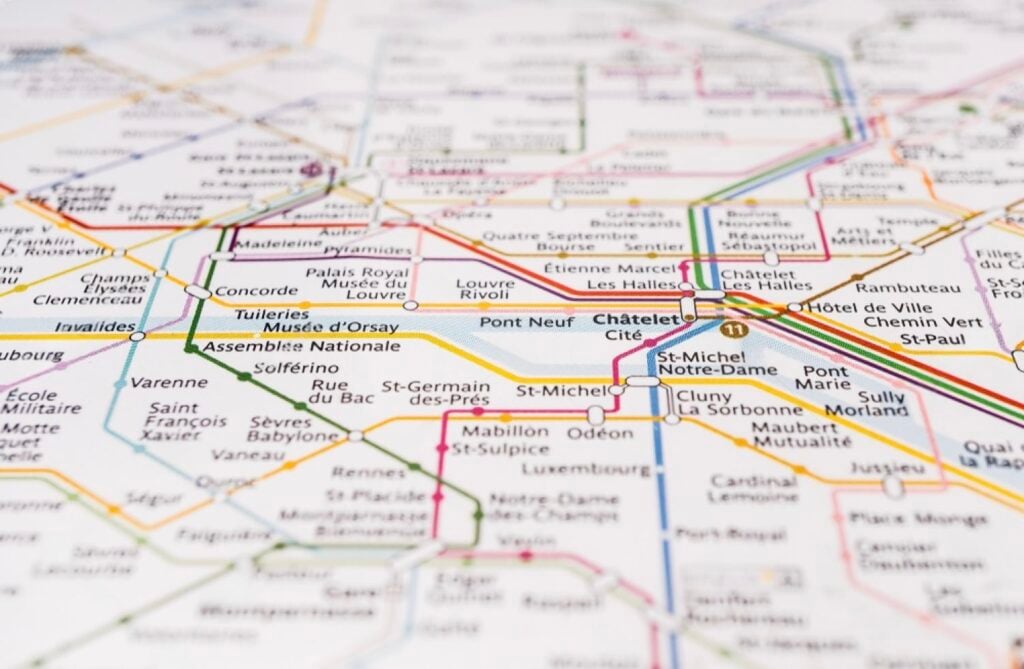
The Paris metro is one of the most iconic subway systems in the world and once you understand a few basics, it becomes incredibly simple to use.
Metro Lines and How They’re Organized
Paris has 16 metro lines, numbered 1 through 14, with two extra lines, 3bis and 7bis serving more local routes. Each line is color-coded, which makes maps and signage easy to understand. The network is dense, with more than 300 stations throughout the city, and most stops are just a few minutes apart by foot, perfect for sightseeing or exploring Paris one neighborhood at a time.
Each metro line typically runs in a straight line either east–west or north–south across the city. Trains run on underground tracks, and the system is designed for fast, frequent travel between the main arrondissements (districts).
Understanding Direction: End-of-Line Navigation
The most important thing to know about using the metro is how direction is shown. Instead of saying “eastbound” or “westbound,” metro signage uses the name of the final station on a line to indicate direction. So if you’re riding Line 1 from the Arc de Triomphe to the Louvre, you’d follow signs toward Château de Vincennes, the last stop on that route.
Once you know your line and your destination, check the metro map or a navigation app to find the correct direction, just follow the signs for the end-of-line station, and you’ll be on your way.
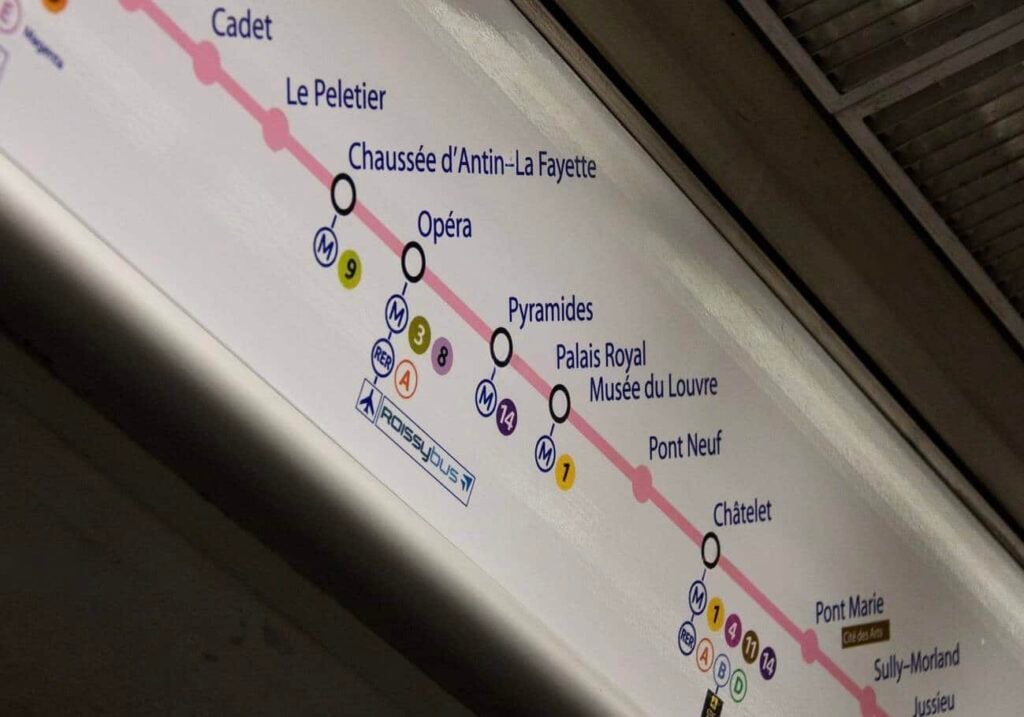
Making Transfers Between Metro Lines
Transfers between lines are common and clearly marked by the word “Correspondance”, which means connection or interchange. You’ll see this on signs inside the stations. Some transfer stations like Châtelet or Montparnasse-Bienvenüe are major hubs where several lines intersect, so be prepared to walk a bit within the station to reach your new platform. Give yourself extra time at these large stations, especially if you’re unfamiliar with the layout.
Metro vs. RER vs. Trams vs. Buses
Many visitors are surprised to learn that Paris has multiple transit systems. The metro is the most useful for travel within central Paris, but it’s helpful to understand how it fits with the RER, trams, and buses:
- Metro trains serve central Paris and stop frequently, great for quick, short rides.
- RER trains connect Paris to the suburbs and major destinations like Versailles, Disneyland Paris, and Charles de Gaulle Airport. These trains run less often but travel faster and stop less frequently.
- Trams run above ground and mostly circle the outer edges of the city.
- Buses are another great option, especially for scenic routes or reaching neighborhoods not well-served by the metro.
The good news: many tickets and passes (like the t+ ticket or Navigo Easy) work across all these systems within Paris Zones 1–2.
Operating Hours and Train Frequency
Wondering what time the Paris metro runs? Here’s a quick breakdown of the daily schedule:
The Paris metro runs from 5:30 AM to 1:15 AM every day, with extended hours until 2:15 AM on Fridays and Saturdays. Trains arrive every 2 to 5 minutes during peak hours and about every 5 to 10 minutes late at night, so you rarely need to check a schedule, just show up and a train will usually arrive soon.
If you’re traveling very early or very late (especially to or from the airport), keep in mind that RER trains run less frequently than metro trains. Always double-check schedules using apps like Citymapper or Bonjour RATP if you’re catching a flight or train.
Local Tip: The final train departure time is based on the station you start from, not your destination, so make sure you’re through the turnstile before the last train time.
Key Metro Lines for Tourists
While all 16 lines are useful, these are some of the best metro lines for sightseeing in Paris:
- Line 1 (Yellow): Crosses Paris east to west. Stops include the Louvre, Champs-Élysées, and Bastille.
- Line 4 (Purple): Great for getting to Montparnasse, Gare du Nord, and Châtelet.
- Line 6 (Light Green): Includes scenic above-ground segments, especially near the Eiffel Tower.
- Line 14 (Dark Purple): Fully automated and very fast. Helpful for connecting to major transit hubs.
Tip: Highlight or memorize the lines near your hotel or key destinations to make route planning easier.
Which Ticket or Pass Is Right for You?
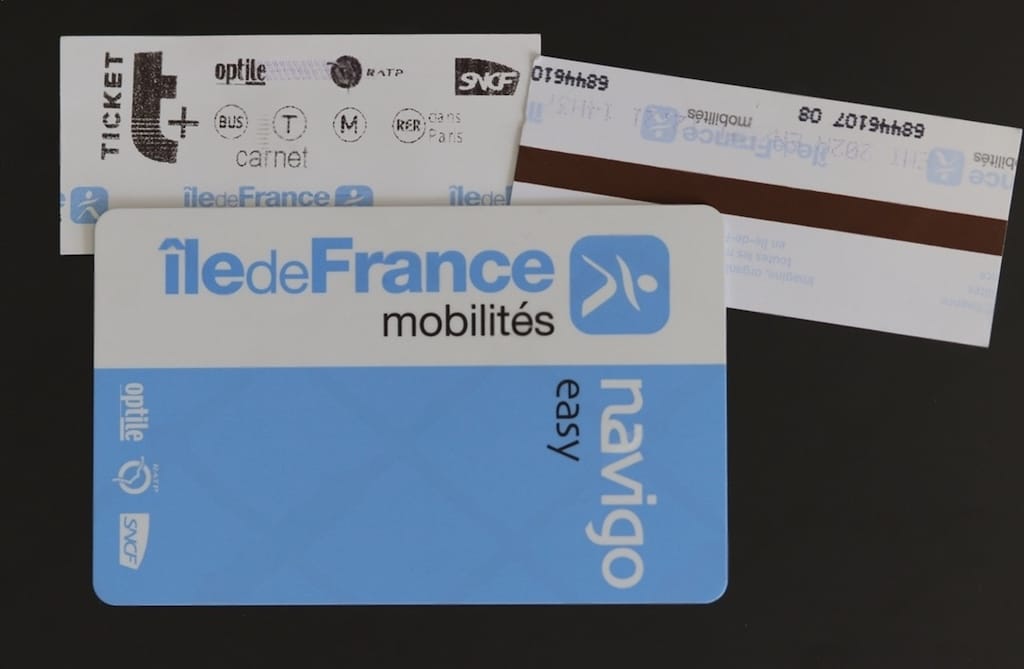
Choosing the right metro ticket can feel overwhelming at first, there are multiple types, prices vary, and not every pass covers the same zones. But once you understand the basics, picking the best option is actually pretty simple and can save you both time and money during your stay.
If you’re wondering how to buy Paris metro tickets, this breakdown covers the basics and helps you choose what’s best for your trip.
| Ticket Type | Price | Validity | Best For |
|---|---|---|---|
| Ticket t+ (paper) | €2.50 | 90 mins on Metro, RER (Zone 1), buses | One-off rides or emergencies |
| Navigo Easy | €2 (card) | Rechargeable w/ t+ or day passes | First-timers, short trips, paper-free |
| Navigo Découverte | €31.60 | Unlimited Mon–Sun (all zones) | 4–7 day stays incl. airports + Versailles |
| Paris Visite Pass | €13.55+ | 1–5 day unlimited + discounts | Sightseers who love museums |
| CDG/Orly RER ticket | €11.80+ | One-way to/from airport via RER B | Airport transfers |
So…Which Pass Should You Choose?
Here’s a quick guide based on your travel style:
- 1–3 days, light metro use → Get a Navigo Easy and load a few t+ tickets or a day pass
- 4–7 days, especially Monday–Sunday → Go with the Navigo Découverte (unlimited rides, includes airports!)
- Super short trip with nonstop sightseeing → Consider the Paris Visite Pass for 1–2 days
- Just need to get into the city from the airport → Buy a one-way RER ticket or use the Découverte if you have it
💡 Families and groups: Each person must have their own ticket or card, there’s no group pass option for the metro.
💡 Local tip: The Navigo Easy is perfect for solo travelers or families with multiple cards. It’s reusable, reloadable, and makes you feel like a Parisian.
How to Buy Paris Metro Tickets (Step-by-Step)
Buying metro tickets in Paris is easier than it looks, once you know where to go, what to buy, and how the machines work. Here’s exactly what to expect so you don’t waste time fumbling with buttons or wondering if you’re in the right line.
Step 1: Choose Where to Buy
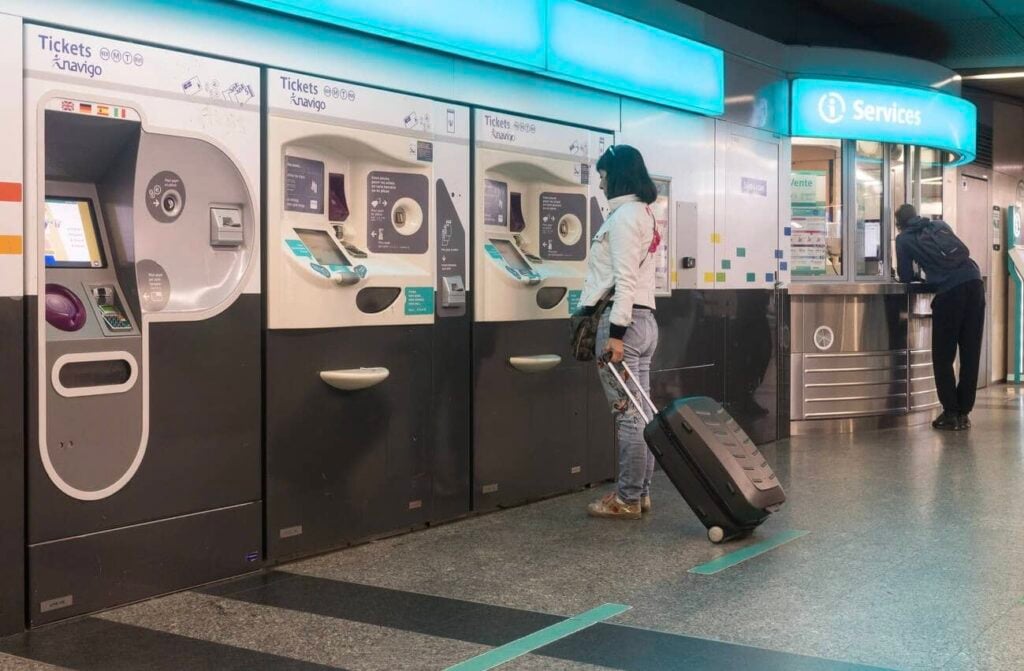
You can buy metro tickets or passes in several places, depending on your preference:
- Ticket machines (purple Île-de-France Mobilités machines) are available in all metro stations and support multiple languages.
- Staffed ticket windows are found in major stations like Gare du Nord, Châtelet, and Saint-Lazare.
- Tabac shops sell paper t+ tickets, though many are phasing these out.
- IDF Mobilités app lets you recharge Navigo Easy and Navigo Découverte cards directly from your phone.
💡 Pro Tip: If you’re buying a Navigo Découverte, you’ll need to go to a staffed window and bring a passport-sized photo.
Step 2: Using the Ticket Machine
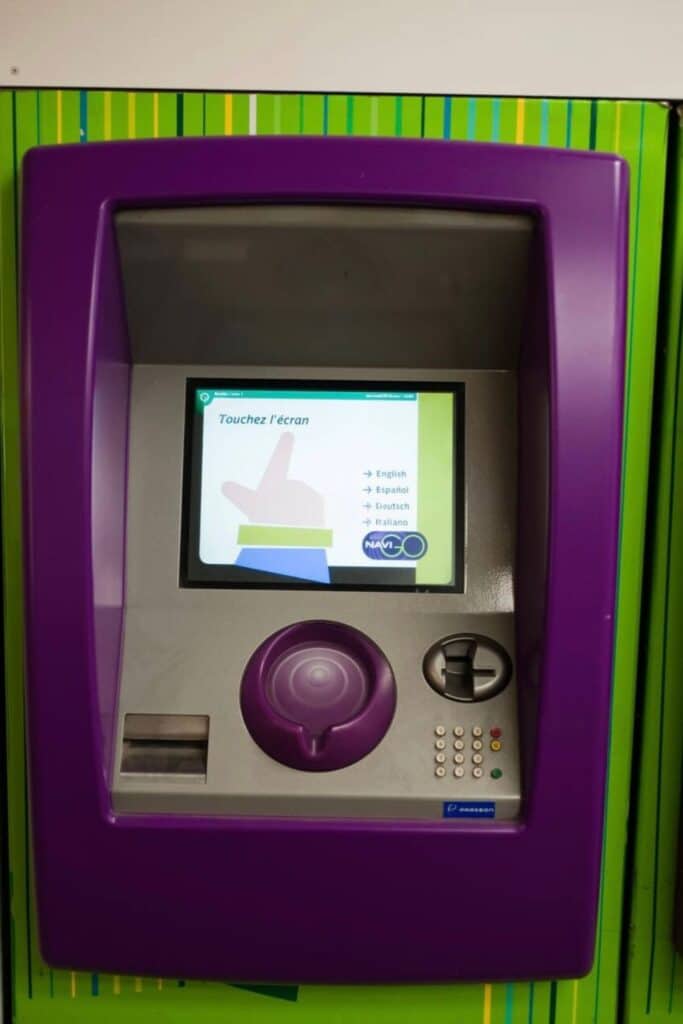
If you’re at a self-service machine, here’s what to do:
- Tap the screen and select your language (English is available).
- Choose “Tickets & Passes” or “Buy a Navigo Pass” depending on what you need.
- Select your ticket type:
- t+ single
- Carnet (10-pack)
- 1-day pass
- Navigo card recharge
- Choose the number of tickets or days.
- Pay using a contactless card, chip-and-pin credit card (Visa/Mastercard), or euros (some machines accept coins and small notes).
- Collect your paper ticket or tap your Navigo card to load the fare.
💡 Note: American credit cards without a chip or PIN may not work on some machines, always carry a few euros in coins just in case.
The first time I tried buying a ticket, I tapped every button except the one that changed the language to English. 😅 It’s actually on the home screen, bottom right, now I find it in seconds, but that first time? Panic mode.
Step 3: Top Up or Recharge Cards
If you have a Navigo Easy or Découverte card, you can reload it:
- At a machine (same steps as above)
- At a ticket counter
- Or via the IDF Mobilités app using NFC on a compatible phone
💡 Local Tip: If you’re staying longer, keep your card for future visits, it never expires!
Step 4: Validate Your Ticket
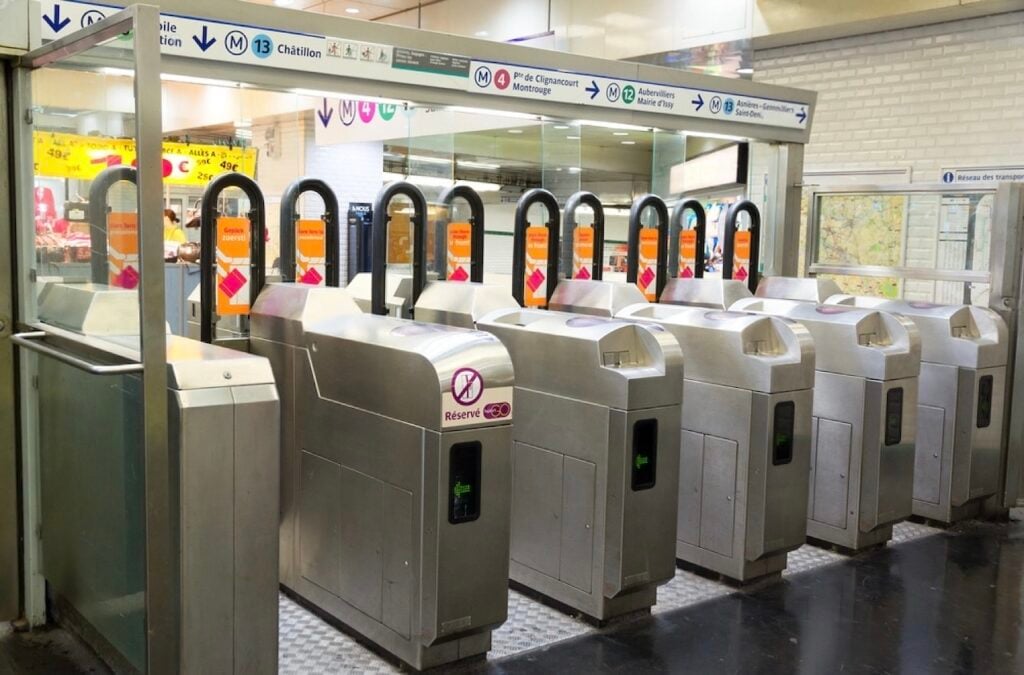
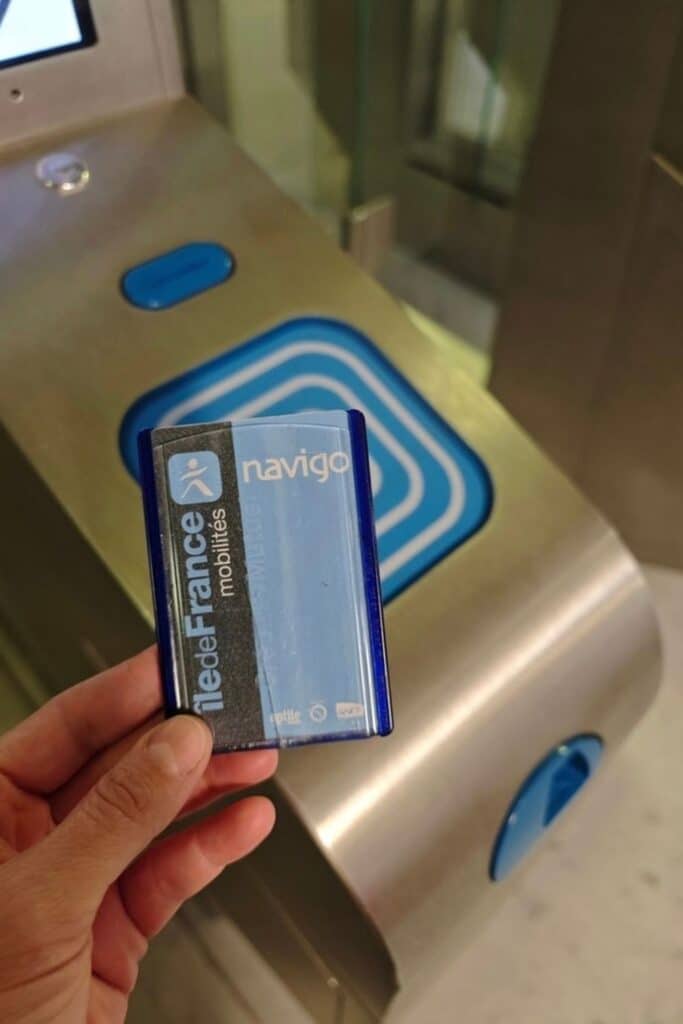
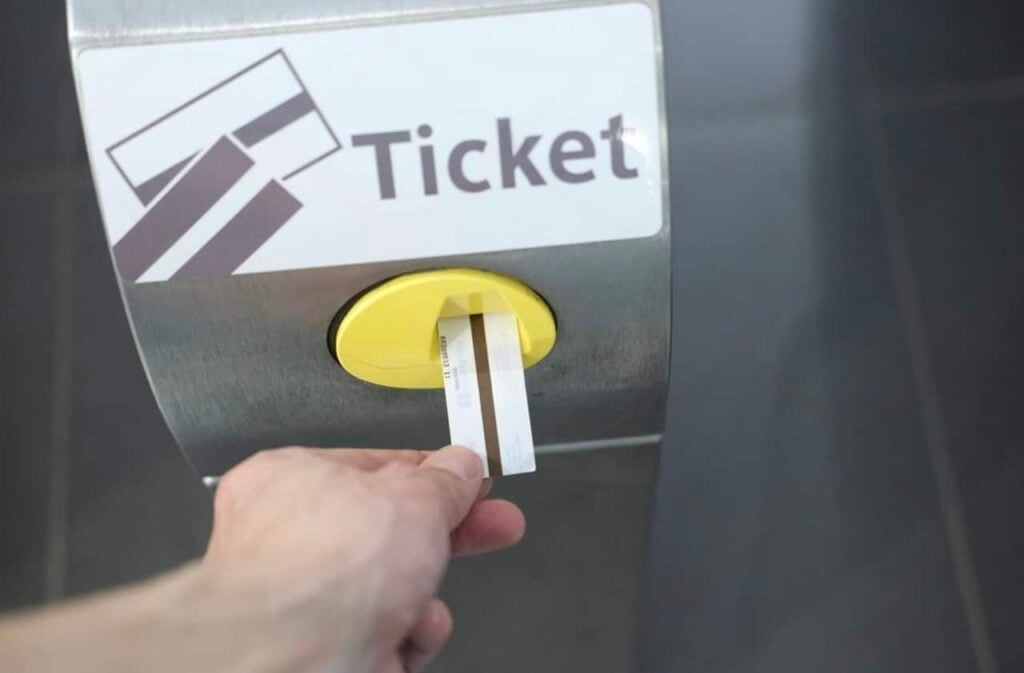
Before entering the metro, make sure to validate your ticket or tap your card at the gate:
- Paper ticket → Insert into the slot, it will pop out on top and open the gate.
- Navigo card → Tap it on the purple reader until you hear the beep.
💡 Keep your ticket with you the entire time, random inspectors patrol the metro. If you can’t show your validated ticket during a check, you may face a fine of €35–€60, even if it was an honest mistake.
Step 5: Keep Your Ticket Until You Exit
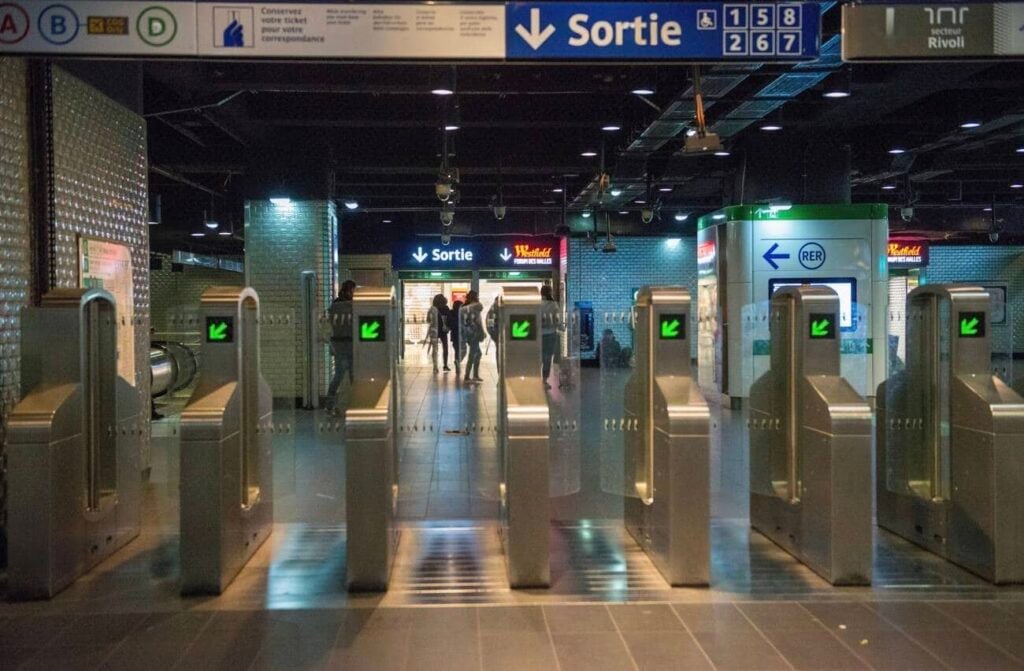
- Especially true for RER or airport trains, you’ll need it to exit the gate. Don’t throw it away until you’re completely out of the system.
- Don’t mix up airport tickets with your metro tickets. If you buy a paper airport RER ticket, it’s only valid for that specific trip
💡 Bonus Tip: Screenshot directions before going underground, cell signal disappears fast
Navigating the Metro System Like a Local
Once you’ve got your ticket and know your line, navigating the Paris metro becomes a breeze, and even kind of fun. Locals get around fast by mastering a few habits and paying attention to subtle signs. Here’s how you can, too.
Reading Metro Signs and Maps Like a Pro
Every metro station has color-coded signage for each line. You’ll notice signs showing the line number (in a colored circle), the direction (final stop on the line), and often a list of key stations in between.
- Example: For Line 1, you’ll see signs marked “Château de Vincennes” or “La Défense”, depending on direction.
- Transfers are marked as “Correspondance” with arrows pointing toward the connection.
📍 Look for wall-mounted maps on platforms and line maps inside each train car to track where you are and where to get off.
🗣️ Real Talk: I still remember my first solo trip on the Paris metro. I proudly bought my ticket, marched through the turnstile… and promptly got on the train going in the wrong direction. Twice. I didn’t realize you had to check the terminus station to know which way you’re going. I ended up on Line 6 heading to Nation when I meant to go to the Eiffel Tower. Lesson learned: always double-check the final stop on the map, it saves a lot of backtracking!
Switching Lines Without Getting Lost
Parisians move quickly through transfer stations because they know how to follow the “Correspondance” signs confidently. Here’s how to do the same:
- Follow the color and number of the line you’re switching to
- Some transfers (especially at Châtelet, Gare de Lyon, or Montparnasse-Bienvenüe) require long walks, be patient, and bring comfortable shoes!
- Don’t hesitate to ask a local or staff member if signs become unclear, most people are happy to help, especially if you lead with a polite “Bonjour”
💡 Pro tip: When transferring, avoid peak hours (8–9:30 AM and 5–7 PM) for a smoother experience.
The first time I transferred at Châtelet, I followed the signs… and kept walking… and walking. It felt like I was crossing all of Paris underground. If you’re wearing a backpack, give your shoulders a pep talk beforehand.
Best Metro Apps for Real-Time Help
Parisians rarely travel without an app, and neither should you. These three will make you feel like you’ve lived here for years:
- Citymapper – Best all-around app for real-time directions, alternate routes, and delay notifications.
- Bonjour RATP – The official app from the Paris transit authority with live train arrivals and station maps.
- Google Maps – Useful for basic metro routing, but can be slightly delayed with live updates.
💡 Download these before arriving, and screenshot directions before going underground, most metro stations don’t have cell service.
Boarding Tips: Train Position Matters
- If the platform is crowded, walk a bit further down, the front and back cars are often less full.
- For short connections, board near the front or back of the train depending on your station’s layout, Citymapper sometimes shows best boarding positions to shorten transfer time.
- Let riders exit the train first, and then step in quickly, Parisians move fast, and so should you!
Where to Stand and Sit (or Not)
- Stand to the right on escalators, the left is for walking.
- Avoid sitting next to train doors if the car is crowded, you’ll be in the way at every stop.
- If you’re unsure where to go, step to the side of a hallway or platform so others can pass.
💡 Pro tip: Look confident, even if you’re not. A quick glance at your app, then walk with purpose, locals do it all the time.
| Landmark | Nearest Metro Stop | Line(s) |
|---|---|---|
| Eiffel Tower | Bir-Hakeim or Trocadéro | Line 6, Line 9 |
| Louvre Museum | Palais Royal – Musée du Louvre | Line 1, Line 7 |
| Sacré-Cœur / Montmartre | Anvers or Abbesses | Line 2, Line 12 |
| Notre-Dame Cathedral | Cité or Saint-Michel | Line 4, RER B |
| Arc de Triomphe | Charles de Gaulle–Étoile | Line 1, Line 2, Line 6 |
| Champs-Élysées | Franklin D. Roosevelt or Clemenceau | Line 1, Line 9 |
| Versailles | Versailles-Château Rive Gauche | RER C |
| Disneyland Paris | Marne-la-Vallée – Chessy | RER A |
Tips for Using the Metro in Paris (That No One Tells You)
Even the most confident traveler can feel out of place on their first few metro rides, but with a few insider tips, you’ll blend right in. These are the things locals just know, and most travel blogs don’t mention.
Metro Etiquette: The Unspoken Rules
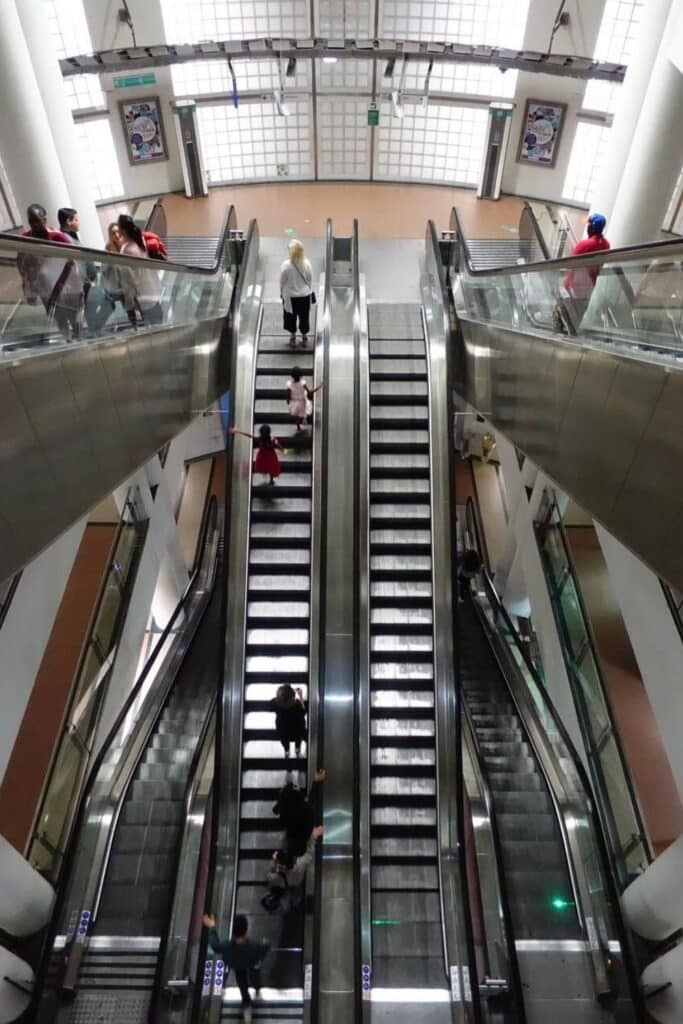
Parisian commuters follow a silent code. Breaking it won’t get you scolded, but you’ll definitely stand out, and not in a good way.
- Always let people off the train before you board. It’s expected, and trying to shove your way on will earn you side-eyes.
- On escalators, stand on the right and leave the left side clear for people who want to walk.
- If the train is crowded, remove your backpack and hold it in front of you. It makes a big difference during peak hours.
- Don’t blast music, take calls on speaker, or treat the train like a café. Parisians value quiet public spaces.
💡 Standing on the left without moving? That’s an instant eye roll from locals, maybe even a gentle “pardon.”
Safety & Pickpocket Awareness
The Paris metro is generally safe, even late at night, but petty theft is real, especially around tourist hotspots.
- Stay alert on Lines 1, 4, 9, and 13, they tend to be the most crowded.
- Keep your bag zipped and in front of you, especially near doors.
- Don’t flash your phone or wallet on the train, quick grabs do happen.
- Trust your instincts. If a carriage feels sketchy, switch cars at the next stop.
💡 Extra tip: Some locals sit in the first car near the driver at night for peace of mind.
Mental Map Tricks Locals Use
- Remember your end-of-line station, it’s your compass for direction.
- Get in the habit of counting stops so you don’t have to stare at a map.
- After a few rides, you’ll naturally start memorizing main transfer points like République, Saint-Lazare, or Bastille.
💡 Hack: Use Citymapper’s “Get off at this door” feature to land closest to your exit or transfer path.
When to Ride for a Better Experience
- Before 8:00 AM or after 8:00 PM less crowded, more peaceful
- Lunchtime (12–2 PM) tends to be quieter than rush hour
- Avoid riding between 8–9:30 AM and 5–7 PM on weekdays if you can
💡 Bonus: If you’re traveling with luggage or kids, riding outside of rush hour will make your life way easier.
Accessibility Notes
The Paris metro is historic and iconic, but that also means it wasn’t originally designed with accessibility in mind. While efforts are being made to modernize the system, many stations still lack elevators, escalators, or step-free access.
If you’re traveling with mobility challenges, strollers, heavy luggage, or even just sore feet, here’s what you need to know before heading underground.
Most Stations Are Not Fully Accessible
The majority of metro stations were built decades ago and are not wheelchair accessible. Many platforms are only reachable by stairs, and some older stations have multiple narrow staircases to reach different lines or exits.
Exceptions: A few stations have elevators or escalators, usually at major hubs or on newer lines.
Stations with elevators/escalators (though sometimes crowded or slow):
- Châtelet
- Saint-Lazare
- Montparnasse-Bienvenüe
- Gare de Lyon
- La Défense
More Accessible Options: RER & Line 14
If you need step-free access, the RER and Metro Line 14 are your best bets.
- RER A and B lines serve major stations with elevators and wider gates for wheelchairs and luggage.
- Line 14 is the most modern metro line, fully automated and built with accessibility in mind. Most stations have elevators, flat entryways, and easy navigation.
💡 Tip: Even if you’re not using Line 14 for your full route, it’s worth transferring to it when possible if accessibility is a concern.
Traveling with Luggage or Strollers
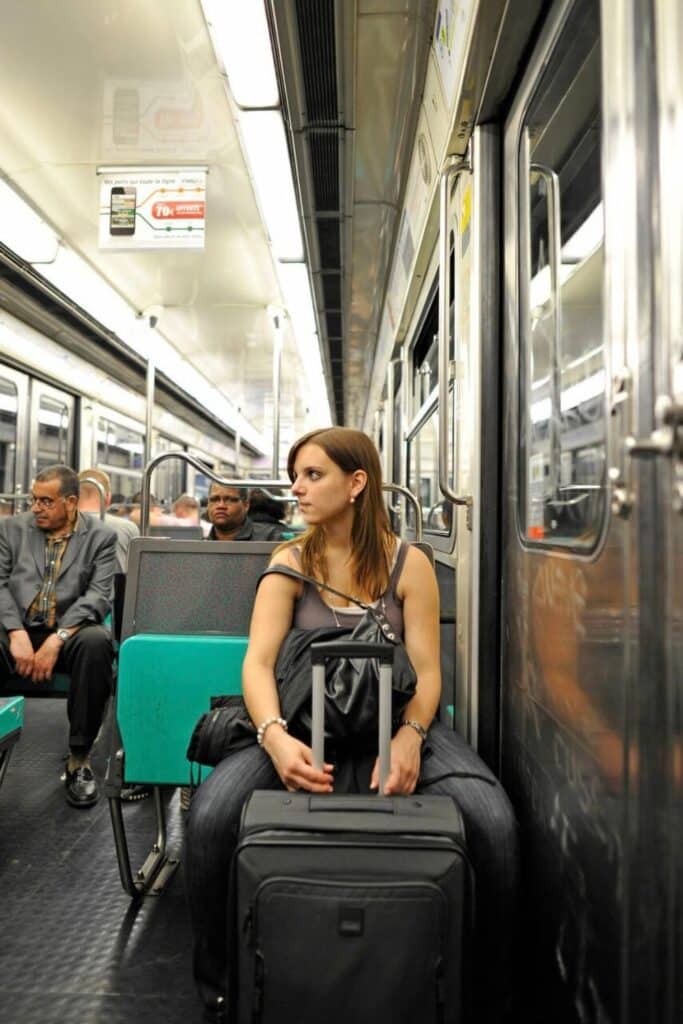
Dragging a suitcase or pushing a stroller through the Parism can be tricky, but doable with some planning.
- Avoid peak hours (8–9:30 AM and 5–7 PM) — trains and platforms are packed, and elevators get crowded
- Use RER lines for airport travel — metro stairs are tough with big bags
- Allow extra time for navigating long corridors or finding street-level exits
- If possible, travel with a backpack or small roller bag rather than large checked luggage
💡 Pro tip: If you’re landing at CDG or Orly, consider taking a taxi or shuttle from the airport to avoid hauling bags through multiple metro transfers.
Abbesses station taught me the hard way that not all m2etro stops are luggage-friendly. I had a giant suitcase and no elevator in sight, by the time I reached street level, I basically needed a croissant and a nap.
Unique & Scenic Metro Rides
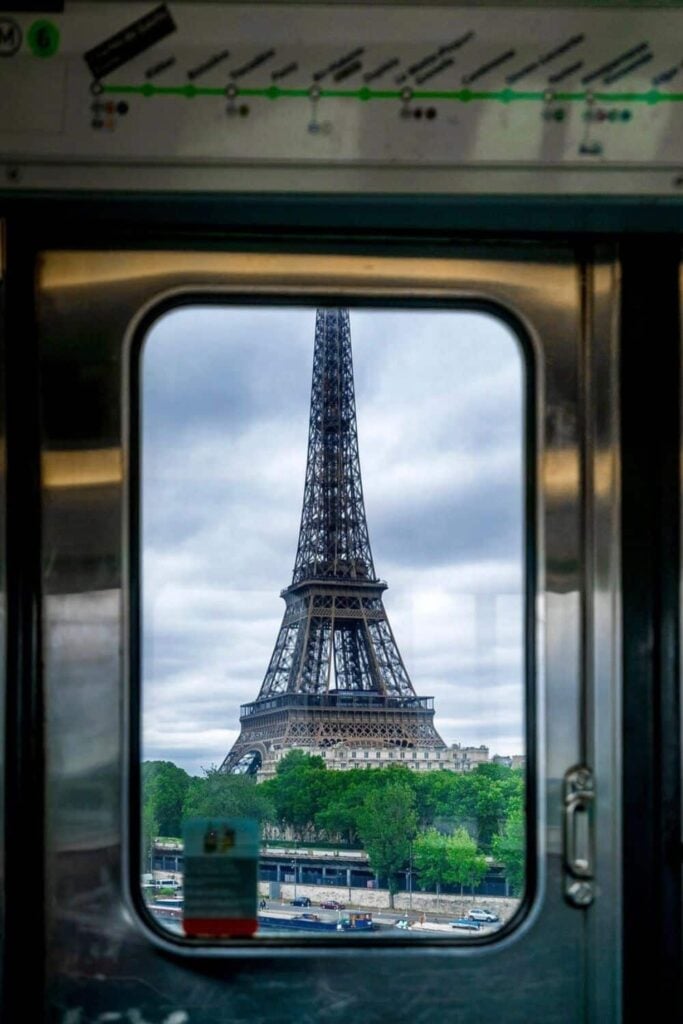
- Line 6 (Passy to Bir-Hakeim) crosses the Seine and gives you epic Eiffel Tower views
- Abbesses Station is one of the deepest and has a gorgeous Art Nouveau entrance
- Line 14 is fully automated and super modern—great for a futuristic ride!
Metro Mistakes to Avoid (First-Timer Pitfalls)
Even seasoned travelers make these errors, save yourself the stress with these quick fixes:
- Buying single paper tickets → Get a Navigo Easy card and load a 10-ride pack (cheaper + paperless)
- Confusing metro with RER → Metro = 🚇 local trips • RER = 🚄 longer journeys (airports, Versailles)
- Not validating your ticket → Always tap your card or insert your paper ticket at the gate before boarding
- Going the wrong direction → Check the line’s end-of-line station before hopping on
- Boarding before letting people off → Step aside, let others exit first—it’s the Parisian way!
- Ignoring pickpockets → Keep your bag zipped and in front of you, especially on Lines 1 and 9
- Not planning for elevators → Most stations lack lifts—plan ahead if you have luggage or strollers
💡 Pro tip: Download Citymapper or Bonjour RATP for real-time directions and smooth transfers.

Paris Metro FAQ: What I Wish I Knew Before My First Ride
Related Posts to Help Plan Your Trip:
- Where to Stay in Paris | Best Areas & Hotels in 2025
- Dangerous Neighborhoods in Paris – Safety Tips for Visitors
- Day Trips from Paris, France • Best Places to Visit Nearby
- Basic French Phrases for Tourists | Quick Reference Guide
- First Time to Paris – What You Need to Know Before You Go
Final Thoughts
The Paris metro may seem complex at first, but it’s truly one of the most efficient ways to explore the city. Once you get the hang of reading the map and following station signage, it becomes second nature.
Whether you’re visiting iconic landmarks like the Eiffel Tower or just café-hopping around the city, the metro will get you there quickly and affordably.
Bon voyage and enjoy exploring Paris like a local!
Drop a comment below with your funniest moment, best tip, or even a small mistake you made—because we’ve all been there (yes, even Parisians).

